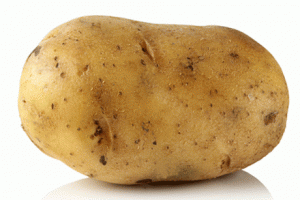I was reflecting on my youth and time in Bear Lake Idaho the other day and looked back on the Danish tradition of eating potatoes. Potatoes to a Dane are like rice to a Pilipino; The Danes can’t live without them. Their preference is boiled with a rich dark brown gravy. Believe it or not, potatoes originated in the New World and were introduced, according to the oral traditions I grew up with, to a very unwilling crowd where many were not interested in this foreign plant because they had a preference for grain. Anyway, the tradition I grew up with continues that during the protestant revolution and the numerous wars that were continually raging across Europe in that day and age, the peasant class realized quickly the value in a staple crop that could not be burned and was difficult to trample underfoot when enemies passed through. And thus everyone got a taste for and learned to love the plant…aside from the French; and when they had a few bad years with cold weather that destroyed the grain crops, much of Europe had deviated from reliance on grain, the starving people rebelled. And thus potatoes even contributed to the French revolution because of their stubborn traditionalism. Was all the true, I don’t really know; but suffice to say Danes love potatoes.
Potatoes have many advantages (which is the reason I think they really did well in northern Europe): they can grow in cold climates with a limited grow season, they can grow in the most worthless rocky soil, poundage in crop yield is extremely high (20-45 tons per hectare, up to 88 tons in New Zealand), high in starch and carbohydrates, easy to store, and they require very little growing maintenance or farming knowledge. The down side is that they strip the ground of nutrients and can be prone to disease, as with the Irish Potato Famine that drove hundreds of thousands to immigrate or starve. Fortunately both of these can be easily avoided; rotate your crops like humans have been doing for thousands of years; and don’t rely on a single species of potato. You may be surprised to learn that there are dozens of official species of potato, not taking into account other forms of tubers. In our family we grew five varieties, each serving s specific purpose in making good meals; but one doesn’t have to be that extravagant in the quest for self-sufficiency.
If you are interested in the vitamin content of an average potato here it is courtesy of wikipedia:
Nutritional value per 100 g (3.5 oz)
Energy 321 kJ (77 kcal)
Carbohydrates 17.47 g
– Starch 15.44 g
– Dietary fiber 2.2 g
Fat 0.1 g
Protein 2 g
Water 75 g
Thiamine (vit. B1) 0.08 mg (7%)
Riboflavin (vit. B2) 0.03 mg (3%)
Niacin (vit. B3) 1.05 mg (7%)
Pantothenic acid (B5) 0.296 mg (6%)
Vitamin B6 0.295 mg (23%)
Folate (vit. B9) 16 μg (4%)
Vitamin C 19.7 mg (24%)
Vitamin E 0.01 mg (0%)
Vitamin K 1.9 μg (2%)
Calcium 12 mg (1%)
Iron 0.78 mg (6%)
Magnesium 23 mg (6%)
Manganese 0.153 mg (7%)
Phosphorus 57 mg (8%)
Potassium 421 mg (9%)
Sodium 6 mg (0%)
Zinc 0.29 mg (3%)
Growing up we would take wheelbarrow load after wheelbarrow load into the root cellar and bury them in straw. My father taught me that when you select the potatoes you want for seed potatoes you do don’t necessarily pick out the smallest or largest, as this can corrupt your strain over years; but you select that plants for seed that are healthy and most resemble the end product you are shooting for. Once you have purchased your first batch you should never have to purchase another as the entire notion of seed potatoes is silly; potatoes from the grocery store can be utilized for this, although I would not recommend this because they can carry diseases which official seed potatoes won’t. These are not harmful diseases, but they could affect your crop. When you plant them it does not matter if the eyes are up or down. Bury the seed plant with a small mound of soil over it and give them plenty of water; but don’t turn it into a swamp either, it’ll rot the seed plants. To harvest dig a test plant when you think they are ready; if they are use the shovel to overturn then entire plant and start hauling away the goods, big and small. If you find green parts on the potato either discard the potato or trim it off wile prepping food; these are usually on the few that might have a little surface exposure. Rotate the crop yearly or enhance your soil with nutrients otherwise your potato crop will start failing.
For sustainable living this is one of the best plants you can grow. If you are curious we had Russet, Red, Irish Cobbler, Yukon Gold, and Russian Banana.
Jon


Leave a Reply